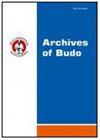The Efficiency of Football Players in One Against One Game in the Aspect of Situational Factors of a Sports Fight
IF 1.5
3区 医学
Q3 SPORT SCIENCES
引用次数: 7
Abstract
Background The aim of research was to assess the efficiency of ‘players-champions’ performance in game situations one against one in the aspect of changing the result of a competition, the time and place of performance. Material/Methods: We analysed the game of Spanish competitors in 13 matches played in final tournaments of the World and European Championships in the years 2008–2010. The method of observation was applied. Information about the game was registered on a monitoring sheet of designed by the present authors, using criteria of performance assessment proposed by Szwarc. Activity, effectiveness and reliability of individual offensive and defensive performances were assessed in the context of realization of the aim of the game. Results: It was noted that in one match Spanish footballers, the World and European Champions, performed on average from 184 to 253 encounters in fight situations one against one with average reliability of 56%. More frequently they got engaged in offensive play and performed it more reliably than defensive actions, and the efficiency of such performance was decreasing in course of the game. When the result of the game was favourable, they used a strategy of “defensive” offensive – at first they aimed at keeping the ball and/or at winning the field with it thus transferring the gravity of the game to the opponent’s half. In circumstances of an unfavourable result, when the opponent was in possession of the ball, they tried to take it over already in the middle zone of the pitch and immediately create situations of scoring the goal. Conclusions: The World and European Champions showed efficiency in individual performances similar to the previous winners of European and World tournaments. They got engaged in offensive performances more often than in individual defensive performances, which should be recognized as a feature characteristic of their style of play.从竞技格斗情境因素看足球运动员一对一竞技效率
本研究的目的是从改变比赛结果、比赛时间和比赛地点的角度来评估“球员-冠军”在一对一比赛情境下的表现效率。材料/方法:对2008-2010年世界杯和欧洲杯决赛中西班牙选手的13场比赛进行了分析。采用观察法。有关游戏的信息记录在由作者设计的监测表上,使用了Szwarc提出的绩效评估标准。在实现比赛目标的背景下,评估了个人进攻和防守表现的活动性、有效性和可靠性。结果:值得注意的是,在一场比赛中,西班牙足球运动员,世界冠军和欧洲冠军,在一对一的战斗情况下平均表现为184到253次,平均可靠性为56%。他们更频繁地参与进攻,并且比防守更可靠,这种表现的效率在比赛过程中不断下降。当比赛结果有利时,他们采用“防守”进攻的策略——一开始他们的目标是控球和/或赢得比赛,从而将比赛的重心转移到对手的半场。在不利的情况下,当对手控球时,他们试图在球场的中区接管球,并立即创造进球的机会。结论:世界冠军和欧洲冠军在个人表现上的效率与之前的欧洲和世界冠军相似。他们的进攻表现比个人防守表现更频繁,这应该被认为是他们比赛风格的一个特点。
本文章由计算机程序翻译,如有差异,请以英文原文为准。
求助全文
约1分钟内获得全文
求助全文
来源期刊

Archives of Budo
SPORT SCIENCES-
CiteScore
2.80
自引率
47.60%
发文量
0
审稿时长
>12 weeks
期刊介绍:
Archives of Budo is an international peer reviewed journal publishing articles on various aspects of the sports sciences covering education and research in martial arts and combat sports, and related areas like biomechanics, kinesiology, medicine, psychology, sociology, technologies of sports equipment, research in training, selection, performance, survival, and other interdisciplinary perspectives.
Archives of Budo editors endorse the principles embodied in the Helsinki Declaration and expect that all research involving humans has been performed in accordance with these principles. All human studies must have been approved by the investigator''s Institutional Review Board. A copy of the relevant documentation should be included with the manuscript. Furthermore Archives of Budo follows the ICMJE''s Recommendations for the Conduct, Reporting, Editing and Publication of Scholarly Work in Medical Journals.
Archives of Budo provides free, immediate and permanent online access to the full text of all articles distributed under the terms of the Creative Commons Attribution Non-commercial License http://creativecommons.org/licenses/by-nc/4.0), which permits use, distribution, and reproduction in any medium, provided the original work is properly cited, the use is non-commercial and is otherwise in compliance with the license.
 求助内容:
求助内容: 应助结果提醒方式:
应助结果提醒方式:


